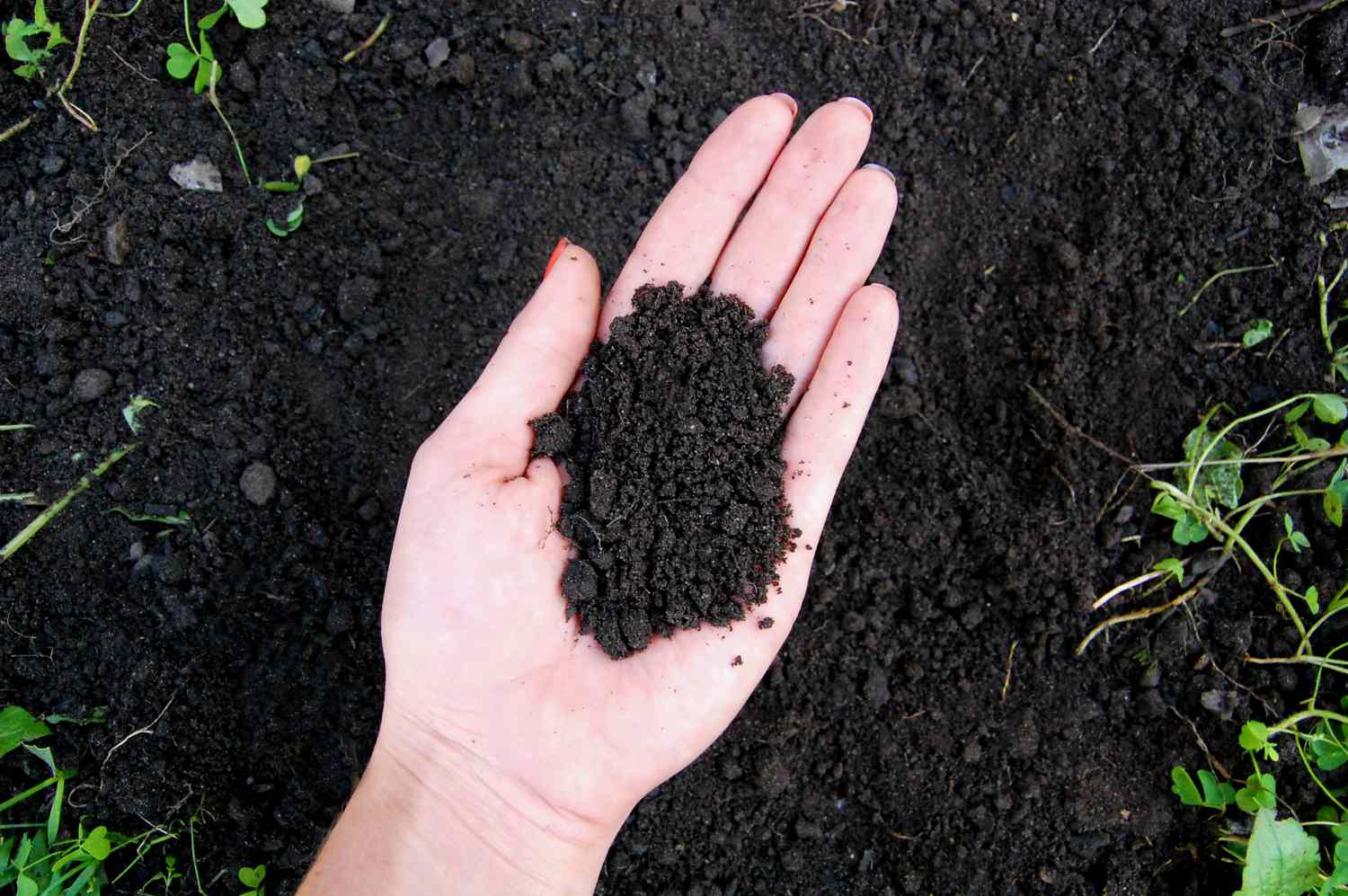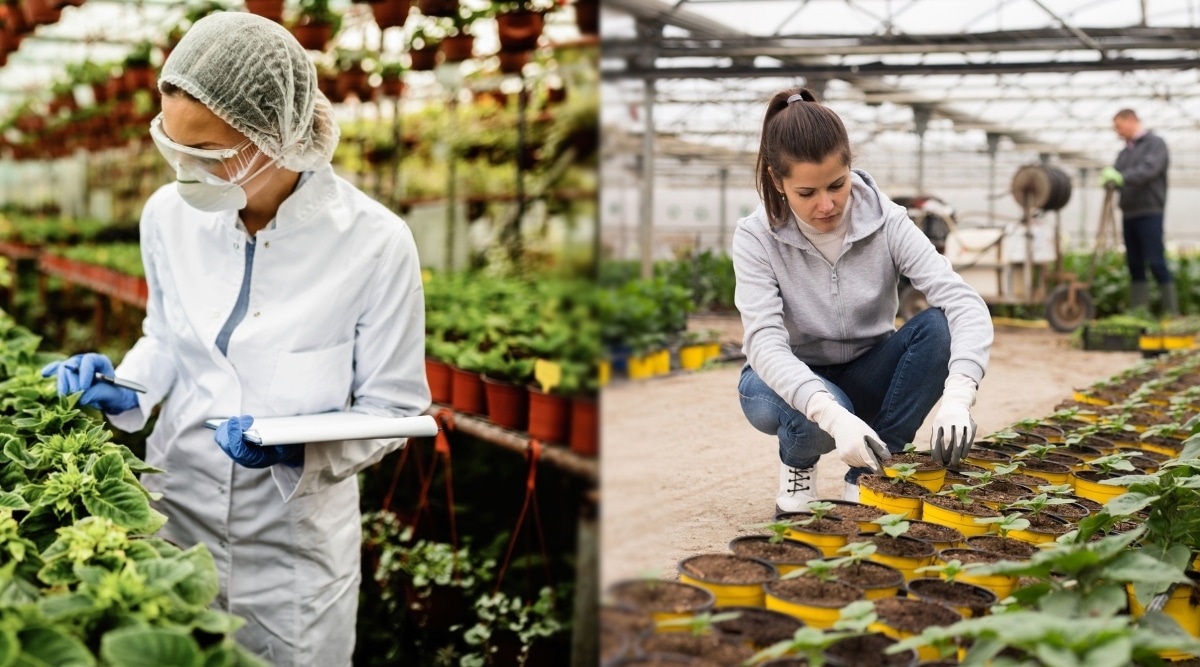Home>Gardening News and Trends>Botany Is The Study Of What Life Form?


Gardening News and Trends
Botany Is The Study Of What Life Form?
Modified: January 22, 2024
Get the Latest News on the Study of Botany and Discover What Life Forms it Explores. Stay Informed with the Latest Updates and Developments in Botany
(Many of the links in this article redirect to a specific reviewed product. Your purchase of these products through affiliate links helps to generate commission for Chicagolandgardening.com, at no extra cost. Learn more)
Table of Contents
Introduction
Welcome to the fascinating world of botany, the scientific study of plants. From the towering trees of the Amazon rainforest to the delicate wildflowers that dot open fields, plants form the foundation of life on Earth. Botany is a multifaceted discipline that explores the incredible diversity and complexity of plant life, unraveling the mysteries of their structure, function, evolution, and interactions with the environment.
Since ancient times, humans have been intimately connected to plants. We rely on them for food, medicine, shelter, and oxygen. But botany goes beyond our basic needs, delving deep into the inner workings of plants and shedding light on their remarkable adaptations and ecological roles.
Botany encompasses a wide range of topics, including plant taxonomy, anatomy, physiology, genetics, ecology, and biotechnology. Through careful observation, experimentation, and analysis, botanists unlock the secrets of plant life, enabling us to better understand and utilize the incredible potential of these organisms.
In this article, we will delve into the world of botany, exploring its scope, importance, and various branches. Join us as we embark on a journey into the intricate and awe-inspiring realm of plants.
Defining Botany
Botany, also known as plant biology or phytology, is the scientific study of plants. It involves understanding and exploring the structure, function, classification, evolution, and interactions of plants, from microscopic algae to towering trees.
Botany is derived from the Greek word “botanē” meaning “plant.” It is a discipline that combines elements of biology, chemistry, genetics, ecology, and environmental science to unravel the complexities of plant life.
At its core, botany seeks to answer fundamental questions about plants. How do plants grow and reproduce? How do they obtain and utilize nutrients? How do they respond to environmental stimuli? By addressing these questions, botanists deepen our understanding of how plants contribute to the Earth’s ecosystems and sustain life on our planet.
One key aspect of botany is taxonomy, which involves classifying and naming plants based on their similarities and evolutionary relationships. Botanists group plants into various hierarchical categories, from broad divisions like angiosperms (flowering plants) and gymnosperms (conifers) to more specific orders, families, genera, and species. This classification system allows scientists to organize and categorize plant diversity, aiding in their study and conservation.
Botany plays a crucial role in various fields, including agriculture, medicine, ecology, and biotechnology. By studying plants, botanists can develop improved crop varieties, discover new medicinal compounds, understand ecological interactions, and develop sustainable solutions for agricultural and environmental challenges.
In the next sections, we will explore the different branches of botany and how they contribute to our understanding of plants and their importance in our lives.
Scope of Botany
The scope of botany is vast and encompasses numerous sub-disciplines, each focusing on specific aspects of plant biology. Let’s take a closer look at some of the key areas within the field of botany:
1. Plant Anatomy: This branch of botany examines the structure and organization of plant tissues, cells, and organs. It explores how plants are built, from their roots to their leaves, and investigates the microscopic details that allow plants to function and grow.
2. Plant Physiology: Plant physiology investigates how plants function at the cellular and molecular level. It explores processes such as photosynthesis, respiration, and the regulation of plant hormones. Studying plant physiology allows us to understand how plants respond to changing environmental conditions.
3. Plant Ecology: This branch focuses on the relationships between plants and their environment. It examines how plants interact with other organisms, such as animals and microorganisms, as well as how they adapt to different habitats and climate conditions. Plant ecologists study topics such as plant community dynamics, nutrient cycling, and the impact of human activities on plant ecosystems.
4. Plant Taxonomy: Plant taxonomy deals with the identification, classification, and naming of plants. Taxonomists use various characteristics, such as morphology, anatomy, and genetic traits, to classify plants into different groups and determine their evolutionary relationships.
5. Plant Genetics: Plant genetics explores the genetic makeup of plants and how traits are inherited and expressed. It encompasses the study of plant genes, genetic variation, and breeding techniques to develop improved crop varieties with desirable traits.
6. Plant Biotechnology: This rapidly advancing field applies genetic engineering and molecular techniques to modify plants for various purposes, such as improving crop yield, developing disease-resistant varieties, and producing valuable chemical compounds. Plant biotechnology has the potential to revolutionize agriculture and contribute to sustainable food production.
These are just a few examples of the diverse branches within botany. Botanists may specialize in one or multiple areas, depending on their research interests and career goals. The scope of botany is continually expanding as new technologies and research findings uncover more about the complex world of plants.
Importance of Botany
Botany holds immense significance in our lives, impacting various aspects of human existence. Let’s explore some of the key reasons why botany is important:
1. Food Production: Studying botany is crucial for understanding and improving food production. By investigating plant genetics, physiology, and breeding, botanists can develop high-yielding crop varieties that are resistant to pests, diseases, and environmental stresses. This knowledge helps ensure global food security and sustains the growing population.
2. Medicine and Pharmacology: Many of the medicines we rely on are derived from plants. Botanists search for new plant-based compounds with potential therapeutic properties, contributing to the development of drugs to treat diseases such as cancer, malaria, and diabetes. Botanical research also helps in conserving medicinal plant species and traditional knowledge of herbal medicine.
3. Conservation and Environmental Protection: Botany plays a vital role in understanding and conserving plant species and ecosystems. By studying plant ecology and taxonomy, scientists can identify and protect rare and endangered plants and their habitats. Botanists also work towards restoring damaged ecosystems and promoting sustainable practices to mitigate the impact of human activities on the environment.
4. Environmental Monitoring and Restoration: Plants are excellent indicators of environmental health. By monitoring plant populations and their responses to changes in climate and land use, botanists can assess the impact of human activities on ecosystems and guide conservation efforts. Additionally, botanists study plant restoration techniques to rehabilitate degraded areas and promote the recovery of native plant communities.
5. Climate Change Research: Botany helps us understand how plants respond to climate change. Studying plant physiology and ecology provides valuable insights into the effects of rising temperatures, altered precipitation patterns, and increased carbon dioxide levels on plant growth, distribution, and phenology. This knowledge is crucial for predicting and mitigating the impacts of climate change on ecosystems and agriculture.
6. Aesthetic and Recreational Value: Plants bring beauty and joy to our lives. Botany allows us to appreciate the diversity of plant forms and colors in gardens, parks, and natural landscapes. Whether it’s cultivating ornamental plants or exploring biodiverse regions, botany enhances our aesthetic and recreational experiences.
These are just a few examples of why botany is important. By studying plants and unraveling their mysteries, botanists contribute to our understanding of the natural world and provide vital insights for sustainable development and the well-being of both humans and the environment.
Branches of Botany
Botany encompasses various specialized branches that focus on specific aspects of plant biology. Let’s explore some of the main branches of botany:
1. Plant Anatomy: This branch of botany studies the internal structure, organization, and cellular components of plants. It examines the different types of plant tissues, such as vascular tissues and epidermis, and explores how these tissues contribute to plant function and development.
2. Plant Physiology: Plant physiology investigates how plants function and carry out essential processes. It examines topics such as photosynthesis, respiration, water uptake and transport, and the regulation of plant hormones. By understanding plant physiology, scientists can unravel the mechanisms behind plant growth, reproduction, and responses to environmental stimuli.
3. Plant Ecology: Plant ecology focuses on understanding the relationships between plants and their environment. It investigates how plants interact with other organisms, such as animals and microorganisms, and how they adapt to different ecosystems and climates. Plant ecology plays a crucial role in understanding biodiversity, nutrient cycling, and ecosystem dynamics.
4. Plant Taxonomy: Plant taxonomy deals with the identification, classification, and naming of plants. Taxonomists use various characteristics, such as morphology, anatomy, and genetic traits, to categorize plants into different groups. Plant taxonomy helps in understanding plant diversity, evolutionary relationships, and conservation efforts.
5. Plant Genetics: Plant genetics explores the inheritance and variation of traits in plants. It examines plant genes, DNA sequences, and genetic mechanisms responsible for specific traits. Plant geneticists use techniques like breeding and genetic engineering to develop improved crop varieties and enhance plant traits.
6. Plant Biotechnology: Plant biotechnology applies genetic engineering and molecular techniques to modify plants for various purposes. It involves the manipulation of plant genes to improve crop yield, develop disease-resistant varieties, and enhance nutritional content. Plant biotechnology has tremendous potential for agriculture, medicine, and environmental conservation.
7. Paleobotany: Paleobotany examines ancient plants and their fossils. It helps in understanding plant evolution, past global climates, and the development of different plant groups over geological time. Paleobotanists study fossilized plant remains to reconstruct past ecosystems and gather insights into Earth’s history.
8. Economic Botany: Economic botany focuses on studying plants of economic importance. It includes crops, medicinal plants, timber species, fiber plants, and plants used for ornamental purposes. Economic botany plays a crucial role in agriculture, medicine, trade, and the sustainable utilization of plant resources.
These branches of botany intersect and collaborate with each other, contributing to a holistic understanding of plants and their significance. Through research and advancements in these areas, botanists continue to expand our knowledge of plant biology and its applications in various fields.
Study of Plant Anatomy
The study of plant anatomy is a branch of botany that focuses on the internal structure and organization of plants. It examines the various tissues, cells, and organs that make up the plant body, shedding light on the intricate details of how plants function and grow.
Plant anatomy encompasses a wide range of topics, including the study of different types of plant tissues and their functions. Tissues, such as epidermis, vascular tissues, and ground tissues, play crucial roles in nutrient transport, water uptake, structural support, and protection against environmental factors.
One key area of plant anatomy is the examination of plant cells. Plant cells have unique features, including a rigid cell wall and organelles such as chloroplasts for photosynthesis. The study of plant cells enables scientists to understand how cells function individually and collectively to support plant growth and development.
Understanding the organization and arrangement of cells within plant organs is another important aspect of plant anatomy. For example, the complex structure of leaves, composed of epidermis, mesophyll, and vascular bundles, allows for optimal photosynthesis and gas exchange. The study of leaf anatomy provides insights into how plants capture sunlight and convert it into energy.
Root anatomy is also a significant area of research within plant anatomy. Roots serve as anchors for plants and help in water and nutrient absorption. The study of root tissues, such as the root cap, cortex, and vascular tissues, aids in understanding how plants acquire essential resources from the soil.
Advancements in microscopy techniques have greatly enhanced our ability to investigate plant anatomy. High-resolution imaging methods allow scientists to study cells and tissues in detail, providing valuable insights into their structure and interactions. Modern molecular techniques also contribute to the field, enabling researchers to examine the genetic and molecular mechanisms underlying plant anatomy.
The study of plant anatomy has practical applications in various fields. In agriculture, an understanding of plant anatomy helps breeders develop crops with desired traits, such as disease resistance or increased yield. In medicine, plant anatomy is essential for identifying and studying medicinal plants and their therapeutic properties.
Overall, the study of plant anatomy is fundamental to our understanding of how plants are built, organized, and function. It provides a foundation for other branches of botany and enables us to appreciate the remarkable complexity and beauty of the plant kingdom.
Study of Plant Physiology
The study of plant physiology is a branch of botany that focuses on understanding how plants function and carry out essential processes. It examines the physical and chemical processes that occur within plants, unraveling the intricate mechanisms that enable plants to grow, reproduce, and respond to their environment.
Plant physiology encompasses a wide range of topics, including photosynthesis, respiration, water uptake and transport, hormone regulation, and response to external stimuli. By investigating these processes, plant physiologists gain insights into how plants adapt and thrive in different ecosystems.
One fundamental area of plant physiology is photosynthesis, the process by which plants convert sunlight into chemical energy. This critical process occurs in chloroplasts, where chlorophyll pigments capture light energy and convert it into chemical energy in the form of glucose. Understanding photosynthesis is essential for studying plant growth, carbon dioxide utilization, and the global cycling of nutrients.
Respiration is another core process studied in plant physiology. Respiration involves the breakdown of glucose to release energy for cellular activities. It occurs in both plant cells and specialized organelles called mitochondria. Plant physiologists investigate the factors that influence respiration rates and its role in plant growth and metabolism.
Water uptake and transport within plants are vital for their survival. By studying plant physiology, researchers gain insights into how plants absorb water from the soil through their roots and transport it to different parts of the plant through specialized tissues called xylem. Understanding water transport helps in developing strategies to improve water-use efficiency in agriculture and conserve water resources.
Plant hormones, or phytohormones, play a crucial role in regulating plant growth, development, and responses to environmental stimuli. Plant physiologists study hormone synthesis, signaling pathways, and their effects on plant growth, including aspects such as seed germination, root and shoot development, flowering, and fruit ripening.
Plants are incredibly adaptable, and their responses to external stimuli are fascinating. Plant physiologists investigate how plants perceive and respond to environmental cues such as light, temperature, gravity, and biotic factors like pathogens and predators. These responses include tropisms, such as phototropism and gravitropism, which determine how plants grow and orient themselves towards or away from stimuli.
The study of plant physiology not only deepens our understanding of how plants function but also has practical applications. In agriculture, plant physiologists help optimize crop production by developing strategies to improve yield, nutrient uptake, and stress tolerance. They also contribute to the development of sustainable agricultural practices and the breeding of crop varieties with desirable traits.
In summary, the study of plant physiology is essential for understanding the inner workings of plants and how they adapt and thrive in diverse environments. It provides valuable insights into plant growth, development, and responses to environmental factors, contributing to advancements in agriculture, ecology, and environmental conservation.
Study of Plant Ecology
The study of plant ecology is a branch of botany that focuses on the relationships between plants and their environment. It explores how plants interact with other organisms and their abiotic surroundings, shedding light on the dynamic and intricate web of life within ecosystems.
Plant ecology encompasses a wide range of topics, including plant distribution patterns, community dynamics, nutrient cycling, and the impact of human activities on plant ecosystems. By studying these aspects, plant ecologists gain insights into the functioning and resilience of ecological systems.
One key area of plant ecology is plant distribution patterns, which involve examining the factors that influence where different plant species are found. Plant ecologists investigate how climate, soil conditions, and other environmental factors shape the distribution of plant species across different regions and habitats.
Plant community dynamics is another important aspect of plant ecology. It involves studying the interactions between plant species within a given area and how those interactions shape the composition and structure of plant communities over time. Understanding community dynamics helps in predicting how ecosystems may respond to disturbances or environmental changes.
Nutrient cycling is a crucial process in ecosystems, and plant ecologists study how plants acquire and recycle nutrients. They investigate how plants obtain essential elements such as carbon, nitrogen, and phosphorus from the environment and how these nutrients move through the ecosystem via plant uptake, decomposition, and nutrient recycling processes.
Plant ecology also examines the relationships between plants and other organisms, such as animals, fungi, and microorganisms. These interactions can be mutualistic, where both species benefit, or antagonistic, where one benefits at the expense of the other. Plant ecologists study how these interactions influence plant growth, reproduction, and overall ecosystem dynamics.
Human activities have a significant impact on plant ecosystems, and plant ecologists play a crucial role in understanding and mitigating these impacts. They study the effects of habitat destruction, pollution, climate change, and invasive species on plant communities. They also work towards conserving and restoring plant ecosystems to promote biodiversity and sustainable development.
Plant ecology has practical applications in various fields. In conservation biology, plant ecologists contribute to the management and preservation of endangered plant species and their habitats. In restoration ecology, they design and implement strategies for reclaiming and revegetating degraded areas. Plant ecologists also provide insights into agricultural practices, land-use planning, and natural resource management.
In summary, the study of plant ecology is essential for understanding the complex interactions between plants and their environment. It provides insights into plant distribution, community dynamics, nutrient cycling, and the impact of human activities on ecosystems. By studying plant ecology, we gain a deeper appreciation for the intricate web of life and the importance of maintaining healthy and resilient plant ecosystems.
Study of Plant Taxonomy
The study of plant taxonomy is a branch of botany that focuses on the classification, identification, and naming of plants. It involves organizing and categorizing plant species into different hierarchical groups based on their similarities and evolutionary relationships.
Plant taxonomy plays a crucial role in understanding and managing plant diversity. By studying plant taxonomy, scientists can identify and describe new plant species, classify plants into different groups, and trace their evolutionary history.
One of the key tasks in plant taxonomy is the identification of plant species. Taxonomists examine various characteristics of plants, such as their morphology, anatomy, reproductive structures, and genetic traits, to distinguish one species from another. Accurate identification is crucial for research, conservation, and effective management of plants.
Taxonomists group plants into various hierarchical categories based on their similarities and evolutionary relationships. The hierarchy starts with broader groups and narrows down to more specific ones. The highest level is the division or phylum, followed by classes, orders, families, genera, and species. This hierarchical system allows scientists to organize and categorize plant diversity, making it easier to study and understand.
Plant taxonomy relies on both morphological and molecular data. Morphology involves studying the physical characteristics of plants, such as their leaf shape, flower structure, and fruit characteristics. Molecular techniques, such as DNA sequencing, are also employed to compare genetic similarities and differences among different plant species.
The study of plant taxonomy provides important insights into plant evolution and evolutionary relationships. By comparing the characteristics and genetic makeup of different plant species, taxonomists can reconstruct the evolutionary history of plants and determine how different plant groups are related to one another.
Plant taxonomy is not only important for scientific research but also has practical applications. It aids in the identification and classification of plants used in agriculture, horticulture, and medicine. Taxonomy helps in understanding the distribution of plant species, conservation efforts, and the protection of endangered plant species.
Advancements in technology, such as DNA sequencing and bioinformatics, have revolutionized plant taxonomy. These tools enable taxonomists to examine the genetic relationships among plants more accurately and efficiently, leading to more precise classification and identification of plant species.
In summary, the study of plant taxonomy is essential for understanding and managing plant biodiversity. It provides a framework for identifying, classifying, and naming plants, allowing scientists to organize and study plant diversity. Through plant taxonomy, we gain insights into plant evolution, their relationships, and their importance in various fields.
Study of Plant Genetics
The study of plant genetics is a branch of botany that focuses on understanding the genetic makeup, inheritance, and variation of plants. It encompasses the study of plant genes, DNA sequences, and genetic traits, unraveling the molecular mechanisms that underlie plant characteristics and how they are passed on from one generation to the next.
Plant genetics plays a crucial role in various aspects of plant biology and has wide-ranging applications in agriculture, medicine, and conservation. By studying plant genetics, scientists can develop improved crop varieties, understand the genetic basis of plant diseases, and conserve endangered plants.
Genes are segments of DNA that contain instructions for the development and functioning of an organism. In plant genetics, researchers explore the structure and function of genes specific to plants. They investigate how genes interact, regulate plant development, and respond to environmental cues.
One important aspect of plant genetics is the study of inheritance. Plant geneticists investigate how traits are passed down from one generation to the next. They examine patterns of inheritance, such as Mendelian inheritance, where traits are determined by the combination of genes inherited from both parents. Understanding inheritance patterns is crucial for plant breeding and developing crop varieties with desirable traits.
Genetic variation within and among plant populations is another area of focus in plant genetics. Geneticists study how genetic diversity arises and how it impacts plant adaptation and survival. Genetic variation is essential for maintaining healthy populations and enables plants to respond to changing environmental conditions.
Plant geneticists use various techniques to study plant genetics. Molecular techniques, such as DNA sequencing and genome mapping, allow researchers to analyze and compare the genetic makeup of different plant species. They also utilize tools like genetic markers, which are specific DNA sequences used to identify and track genes of interest.
Plant genetics has significant applications in agriculture. Researchers use genetic engineering and breeding techniques to develop crop varieties with improved traits, such as higher yield, disease resistance, and drought tolerance. By manipulating plant genes, scientists can enhance crop productivity and address global food security challenges.
Plant genetics is also crucial for understanding and combating plant diseases. Geneticists study plant pathogens and their interactions with plant hosts. By identifying the genes responsible for disease resistance, researchers can develop strategies to breed plants that are better equipped to defend against pathogens.
Conservation genetics is another important area within plant genetics. Geneticists study endangered plant species to assess their genetic diversity and develop conservation strategies to preserve genetic variation and prevent the loss of genetic resources.
In summary, the study of plant genetics provides insights into the genetic makeup, inheritance, and variation of plants. It has wide-ranging applications in agriculture, medicine, and conservation. Through plant genetics, we can develop improved crop varieties, understand plant diseases, and conserve plant biodiversity for the benefit of humanity and the environment.
Study of Plant Biotechnology
The study of plant biotechnology is a branch of botany that focuses on the application of biological techniques and tools to improve plants for various purposes. It involves using genetic engineering, molecular biology, and other technologies to modify plants and enhance their traits, leading to improvements in agriculture, medicine, and environmental conservation.
Plant biotechnology has revolutionized the way we interact with plants and harness their potential. By manipulating the genetic makeup of plants, researchers can develop crop varieties with increased yield, enhanced nutritional content, and improved resistance to pests, diseases, and environmental stresses.
One of the key areas of plant biotechnology is genetic engineering, where specific genes are transferred into plants to introduce desired traits. This technique allows scientists to enhance plant characteristics, such as increased drought tolerance, improved nutrient efficiency, or reduced susceptibility to certain diseases.
Another important aspect of plant biotechnology is molecular breeding. Through techniques such as marker-assisted selection and quantitative trait loci analysis, researchers can identify and select plants with desirable traits more efficiently. This helps in accelerating the process of breeding new crop varieties with improved characteristics.
Plant biotechnology also plays a significant role in the production of pharmaceuticals and useful chemical compounds. Through the use of bioreactors and recombinant DNA technology, researchers can engineer plants to produce valuable proteins, enzymes, vaccines, and even industrial materials. This has the potential to revolutionize medical treatments, industrial processes, and the development of sustainable bio-based products.
Plant biotechnology has applications in environmental conservation as well. It can be used to develop plants that can remediate contaminated soils and water by absorbing and breaking down pollutants. Biotechnological tools also aid in the conservation of endangered plant species through techniques such as cryopreservation and tissue culture.
Advancements in plant biotechnology rely on cutting-edge technologies such as gene editing using CRISPR-Cas9, RNA interference, and high-throughput genomics. These tools enable researchers to precisely modify plant genomes and study gene function, allowing for more targeted and efficient plant improvement strategies.
Plant biotechnology, however, also raises ethical and environmental concerns. The potential impact of genetically modified organisms (GMOs) on ecosystems, biodiversity, and human health requires careful consideration and regulation.
Overall, the study of plant biotechnology provides valuable insights into harnessing the potential of plants for various applications. By combining biological knowledge with technological advancements, plant biotechnologists are at the forefront of developing innovative solutions to address global challenges in agriculture, medicine, and environmental sustainability.
Conclusion
The field of botany encompasses a wide range of fascinating and interconnected disciplines that enable us to unravel the mysteries of plant life. From the study of plant anatomy and physiology to the exploration of plant taxonomy, ecology, genetics, and biotechnology, botany provides insights into the complexity and importance of the plant kingdom.
By delving into the world of botany, we gain a deeper understanding of the fundamental processes that sustain life on Earth. We learn about the intricate structures and functions of plants, their adaptations to diverse environments, and their vital roles in ecosystems.
Botany is crucial for addressing some of the most pressing challenges we face. Through the study of plant physiology, we can develop sustainable agricultural practices to ensure global food security. Plant ecology helps us conserve and restore natural habitats, preserving biodiversity and protecting fragile ecosystems. Plant genetics and biotechnology offer possibilities for improving crop productivity, developing new pharmaceuticals, and contributing to environmental sustainability.
Botany also enriches our lives on a personal level. From the beauty and serenity of a garden to the wonder of plant diversity in natural landscapes, botany awakens a sense of awe and appreciation for the intricacy of the natural world. It invites us to explore the wonders of plant life in our own backyards and in the far reaches of the globe.
As we continue to advance our knowledge through research and technological innovation, the field of botany will continue to evolve. New discoveries and breakthroughs will further expand our understanding of plants and their significance to humanity and the environment.
Whether you are a student, a scientist, an environmentalist, or simply someone with an interest in the natural world, the study of botany offers endless opportunities for exploration and discovery. The more we delve into the mysteries of plants, the more we realize their profound impact on every aspect of our lives.
So, let us embrace the wonders of botany and continue to unlock the secrets of the plant kingdom, fostering sustainable practices, and nurturing our connection to the natural world.








